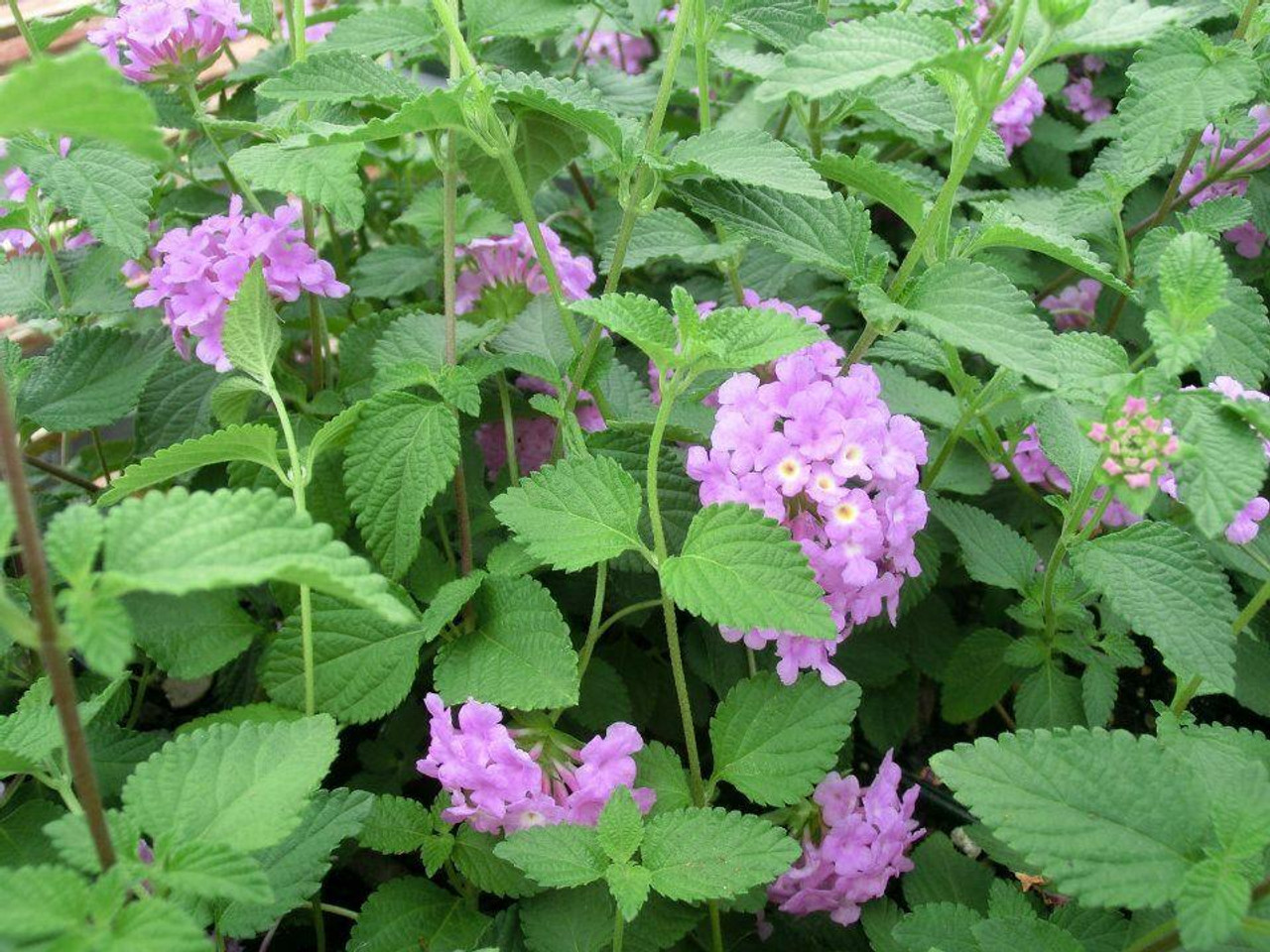Product Description
Lantana montevidensis 'Trailing Purple'
Zones 9 to 11; tender perennial in zones 7 and 8,
Full Sun.
Mature size can reach 6 to 12 inches tall and 4 feet wide; low-growing, spreading growth habit.
Lantana montevidensis 'Trailing Purple' (often simply called Trailing Lantana or Weeping Lantana) is a charming and versatile groundcover known for its profusion of delicate purple blooms and cascading growth habit. Here is a summary of its key features:
Characteristics:
- Flowers: Produces abundant clusters of small, lavender-purple flowers with yellow centers. The flowers are slightly fragrant and bloom almost continuously from spring to frost.
- Growth Habit: A low-growing, spreading plant that typically reaches 6-12 inches tall but can spread up to 4 feet wide or more. Its trailing stems create a cascading effect, making it ideal for hanging baskets, containers, or spilling over walls.
- Foliage: Dark green, ovate leaves with a slightly rough texture. The foliage is evergreen in frost-free climates.
- Hardiness: Hardy in USDA zones 9-11. In colder regions, it can be grown as an annual or overwintered indoors.
Cultivation:
- Sunlight: Thrives in full sun (at least 6 hours per day) for optimal flowering but can tolerate some shade.
- Soil: Adaptable to various soil types but prefers well-drained soil.
- Water: Drought-tolerant once established but benefits from occasional watering during prolonged dry spells.
- Pruning: Can be pruned lightly to shape or control its spread. In colder climates, prune back hard in late winter or early spring before new growth emerges.
- Fertilizer: Generally not required, but a light application of balanced fertilizer in spring can be beneficial.
Landscape Uses:
- Groundcover: Excellent for covering large areas, suppressing weeds, and preventing erosion.
- Hanging Baskets and Containers: Its trailing habit creates a beautiful cascading effect.
- Walls and Slopes: Softens the edges of walls and slopes, adding color and texture.
- Butterfly Gardens: Attracts butterflies and other pollinators.
Advantages:
- Long Blooming Season: Provides continuous color throughout the growing season.
- Heat and Drought Tolerance: Performs well in hot, dry conditions.
- Versatile: Suitable for a variety of landscape applications.
- Low Maintenance: Requires minimal care once established.
- Attracts Pollinators: A valuable addition to butterfly gardens.
Overall, Lantana montevidensis 'Trailing Purple' is a charming and versatile plant that offers a long season of color and a graceful, cascading habit. Its adaptability to various conditions and low maintenance makes it a popular choice for gardens in warm climates.
Trailing Lantana spreads more than common Lantana.
Ten (10) plants in 4-inch containers per flat (or tray).
Other Details
The most important part of the plant is its root system. Healthy roots are the foundation of a healthy, vibrant plant. The type of plug container used is based on the specific needs of the plants. Perennials offered as bare root traditionally perform better when planted as bare root.Planted in a specialized mix, potted plants have well established root systems. Top growth stage will vary depending on the current life cycle and time of year when shipped. In Winter and early Spring dormant plants may be shipped. Dormant plants may be planted right away, even before the last frost date.
Most bare root varieties are field grown for at least one season, though Hemerocallis and Hosta are grown for two seasons. The bulk of the soil is removed during the harvesting process and the tops of most varieties are trimmed back to the crown. They are graded, packed in shredded aspen or sphagnum moss and stored in freezers until ready to be shipped.
See our Container Sizes and Bare Root Perennials pages for more information.
Plant information and care is provided in the Overview section, Plant Genus Page and general information is provided in the Planting Care & Guides. Additional questions can be asked on each Plant page.
Plant Spacing: Using the maximum mature spread or width of a plant to guide spacing, ensures space to grow to full size. To fill an area sooner, plant them closer together. Just remember, future thinning or transplanting may be needed.
Water: Keep a close eye on newly planted perennials, especially throughout the first growing year. Most early plant loss is due to too much or too little water!







